2024 Cadillac Lyriq Review and Test Drive
Distinctive and refined, the Lyriq recasts Cadillac's luxury efforts and more than holds its own against rival EVs.
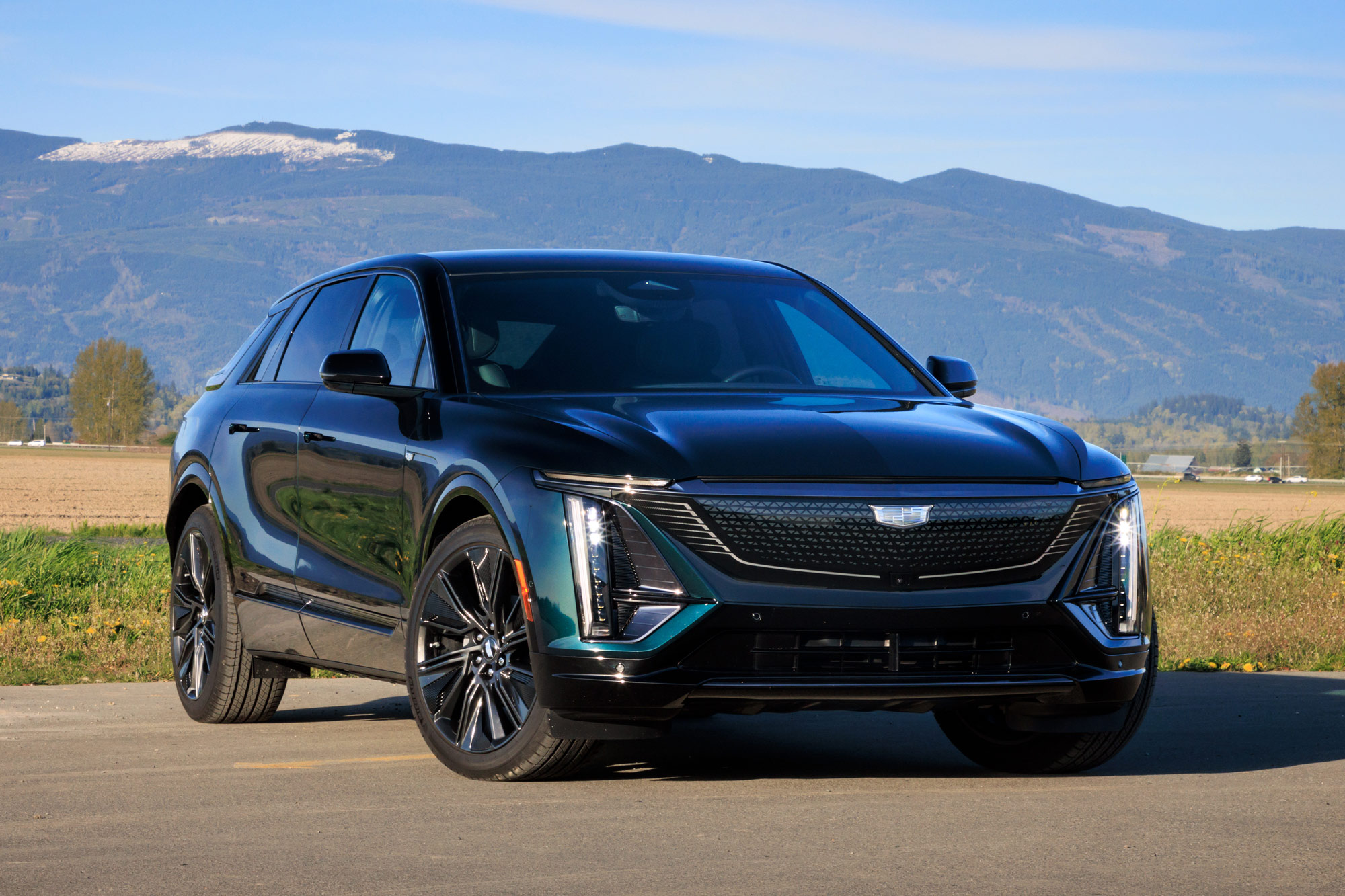 Alex Kwanten
Alex Kwanten
Everywhere I went in the 2024 Cadillac Lyriq, people wanted to talk about it. The conversations often began like this: "Is that a Cadillac? Is it electric? It looks really cool." Coolness is part of what you pay for when buying a luxury vehicle, and if the reaction to my test vehicle is any indication, the long, low, and wide Lyriq is cool in ways other Cadillacs aren't. A year earlier, I spent a week with the similarly sized gas-powered XT5 SUV, which got precisely zero reactions.
In fairness, Cadillac will soon discontinue the aging XT5, while the Lyriq is the automaker's first-ever fully electric vehicle. It telegraphs new styling and technology directions for the brand. Thanks to a slow production ramp-up in 2023, the vehicle is still brand-new to most people, and 2024 brings an expanded lineup. Some of its novelty may fade when more are on the road, but the Lyriq feels of an entirely different era and class than the XT5.
Cadillac has struggled to overcome past missteps and moves downmarket, but electrification has recast many brand perceptions. In a market that made low $70,000 Kias desirable, the Lyriq is a largely successful, clean-slate opportunity to reestablish Cadillac's luxury status with something new, different, and better.
While the XT5 felt like and also-ran among midsize luxury SUVs, the Lyriq feels on par with EV leaders such as the BMW iX and Genesis Electrified GV70 — and superior to many others.
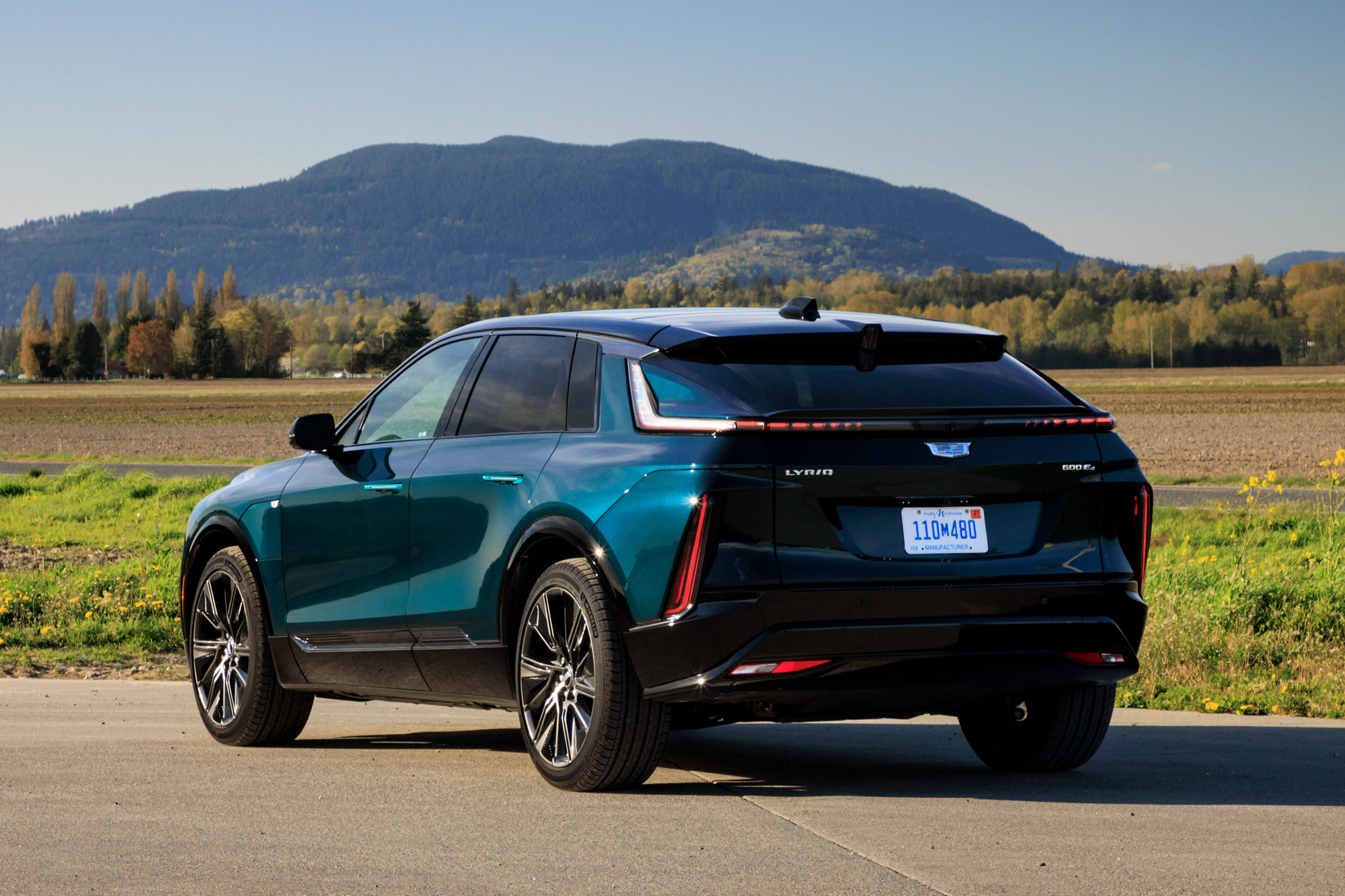 Alex Kwanten
Alex Kwanten
2024 Cadillac Lyriq Prices Stay Reasonable
The 2024 Cadillac Lyriq comes in three trim levels: Tech, Luxury, and Sport. Base prices range from the high $50,000s to the low $60,000s, including the destination charge to ship the SUV from the Spring Hill, Tennessee, factory that builds it to your local dealership. With Luxury and Sport trims, you can choose from three configurations: 1 (standard), 2 (mid-grade), and 3 (loaded up). Lyriqs are eligible for the $7,500 federal EV tax credit.
For this review, Cadillac loaned me a Lyriq Sport 3, which I drove around Seattle and through the northern Cascade mountains of Washington state for a week. My test Lyriq also had dual-motor all-wheel drive (AWD), a 19.2-kW charging unit, and Emerald Lake metallic paint for a total manufacturer's suggested retail price of $77,295, including the $1,395 destination charge. This is pricey but not out of line with this class.
 Alex Kwanten
Alex Kwanten
Lyriq Comes With Plush Interior and a Musical Name
The Lyriq isn't the same kind of Cadillac that Elvis or Isaac Hayes drove (the name refers to Cadillac's mentions in pop songs), but it does have some old-school elements. It's long and wide, with a low beltline and broad hood. It looks big and substantial, and its lighting signatures are like expensive jewelry. My test Lyriq came in a hue-shifting Emerald Lake paint.
Inside, it's just as attractive, with four available colors in black, gray, white, and tan. Everything feels well-made and befitting the Lyriq's price, free of past cost-cutting miscues.
Most of the Lyriq's metallic-looking trim is metal, and even the plastic bits feel nice. Optional extras include open-pore wood trim with tiny laser-etched cutouts that showcase the ambient lighting and match the speaker grilles. The seat patterns are plain but handsome. There's some fingerprint-attracting piano-black trim, but not too much.
A vast curved 33.0-inch touchscreen screen dominates the dashboard and faintly resembles the one in the Lucid Air EV. It's pretty, and exterior lighting displays match its neat, choreographed startup animations.
 Alex Kwanten
Alex Kwanten
The Cadillac Lyriq Is Comfy, Quiet, and Roomy for Five
The Lyriq's seats look plainer than some of its beautifully stitched rivals but are no less accommodating. There's less lateral support than in a BMW iX, but the Lyriq's seats are firm, supportive, and comfortable. Ventilated and massaging front seats are included in the 2 and 3 grades.
This SUV has room for five and 39.6 inches of rear legroom, giving it a space advantage over Genesis' electric SUVs, the GV60 and Electrified GV70. BMW's iX feels roomier in the back thanks to its taller roof, but the Lyriq has plenty of headroom.
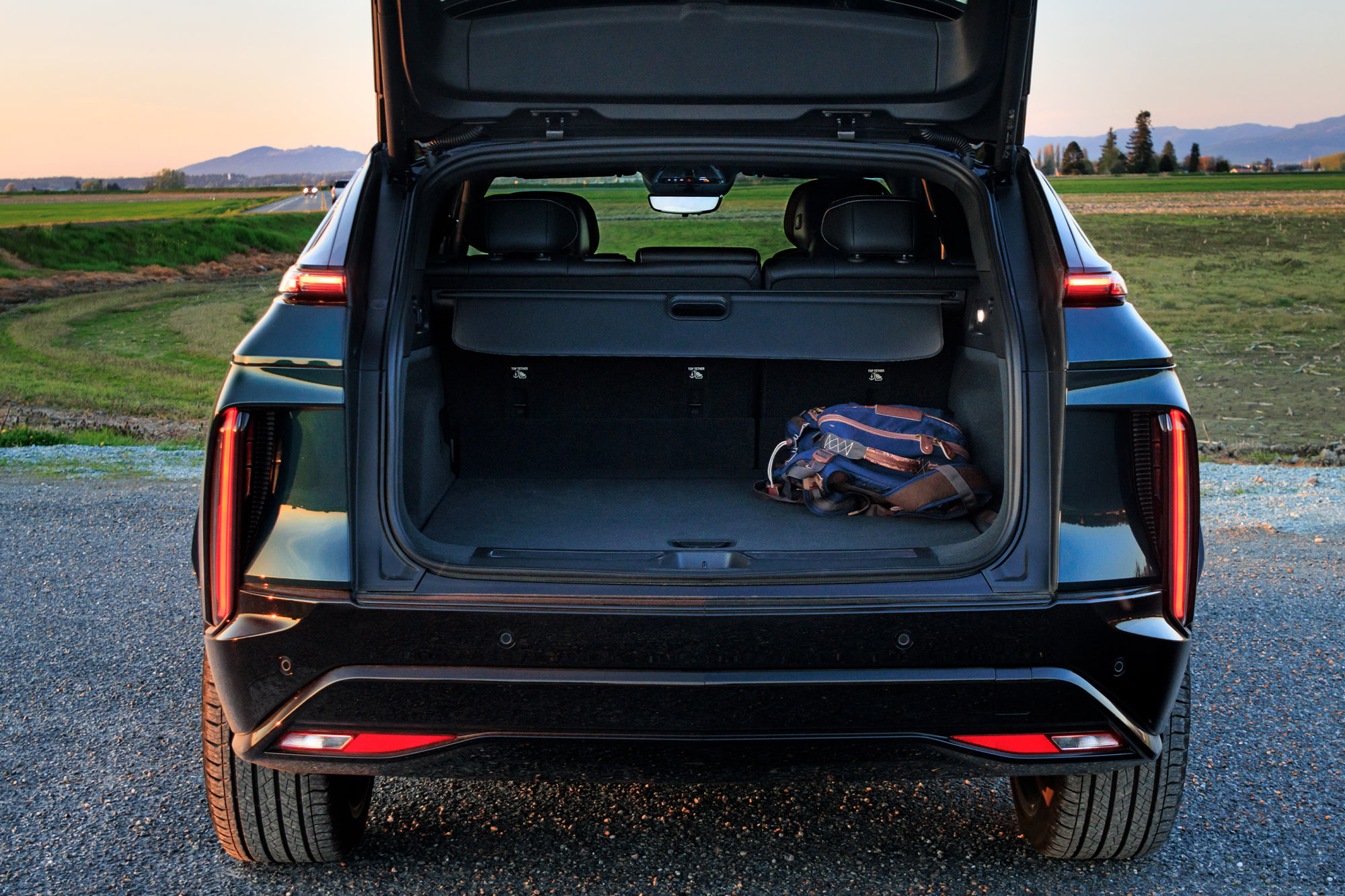 Alex Kwanten
Alex Kwanten
More a Yacht Than a Freighter
Sadly, the Lyriq's sleek shape and low roof eat into cargo volume. With 28.0 cubic-feet of cargo volume behind the rear seats and 60.8 cu-ft with them folded, the Lyriq has only marginally more space than the Electrified GV70 — which offers 28.7 and 56.5 cu-ft respectively — and is well shy of the iX — which has 35.5 and 77.9 cu-ft overall. The Lyriq has no frunk, either.
Small-item storage in the cabin is decent but unremarkable. All but the base model get a powered tailgate, and high trims have a hands-free version. The Lyriq is adequate in terms of utility, but its rivals are generally better.
 Alex Kwanten
Alex Kwanten
2024 Cadillac Lyriq Infotainment Is a Widescreen Wonder
That massive 33.0-inch screen, similar to the ones in the Lucid Air and the Escalade, defines the Lyriq's interior. It's gorgeous, and its operating system is an evolution of Cadillac's earlier systems. As with many EVs, there is a digital learning curve for the Lyriq, but it isn't as steep as those required for Lucid or Mercedes-Benz.
There's a home button, and most menus are simple to navigate. Google built-in is standard and the Lyriq can easily integrate with apps like Google Assistant and Google Maps. It also offers a voice assistant to match native systems from BMW and Mercedes-Benz, though it's more easily confused than those systems.
If you prefer not to use the touchscreen, click wheel and steering wheel buttons help you navigate. Like Lucids, Lyriqs also have a tiny touch screen on the left side. Cadillac uses this for calling up displays and mercifully puts fewer essential functions there than Lucid. It also retains many physical controls, with stalks for wipers and indicators and more than a few buttons.
Wireless Android Auto and Apple CarPlay are standard and work well. The Lyriq also includes a wireless charger, access to a Wi-Fi hot spot, and a seven-speaker stereo. A rich-sounding 19-speaker AKG audio system comes with most trims.
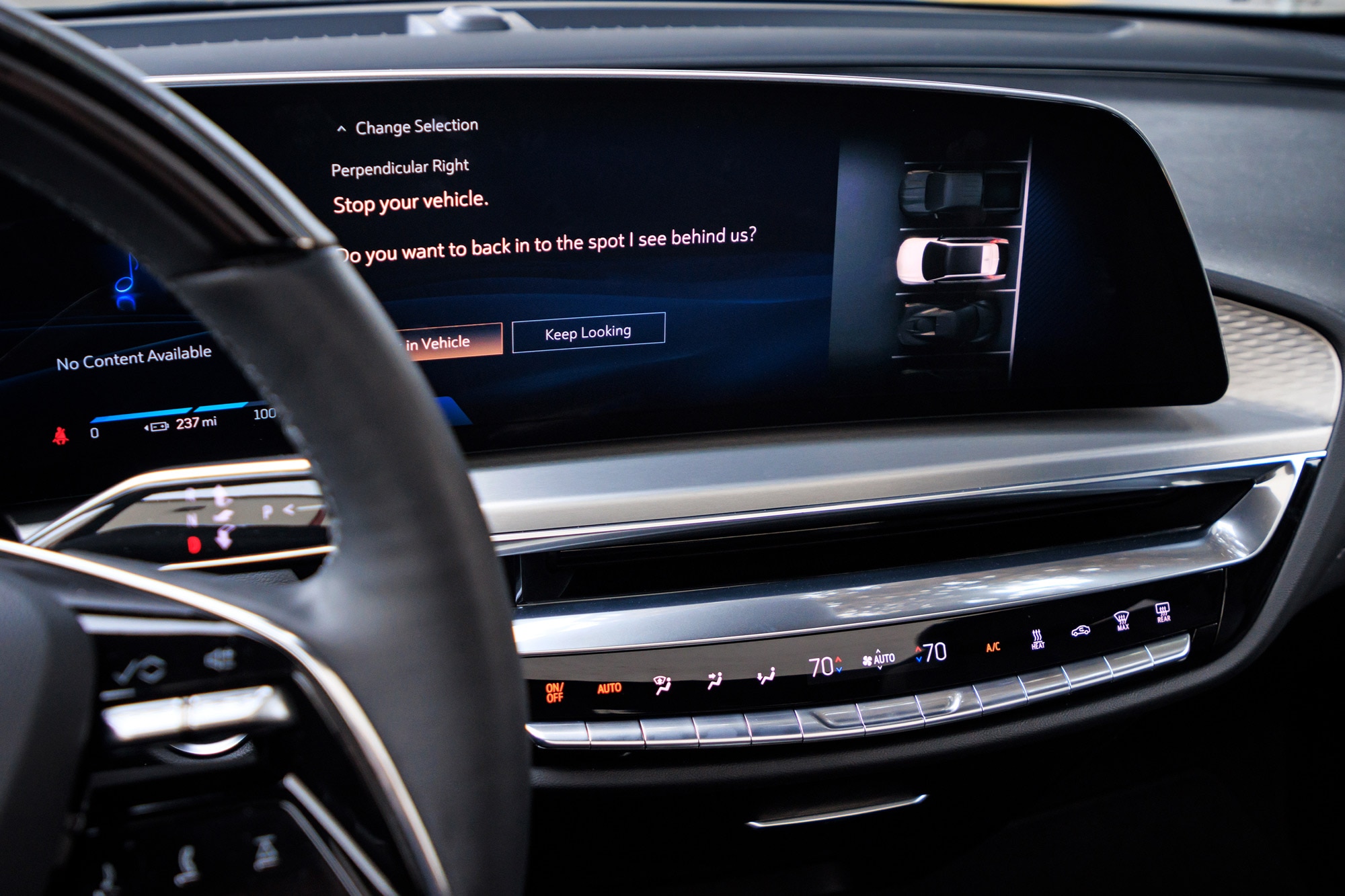 Alex Kwanten
Alex Kwanten
The Lyriq Provides Easy and Functional Digital Extras
With big blind spots, the Lyriq is a vehicle best operated with a surround-view camera, and Cadillac includes a digital display rearview mirror on most trims. Using it requires retraining your brain to understand relative distances, but it's easy to acclimate to. There's also a surround-view display on the dashboard.
The Lyriq's instrumentation is entirely digital, and you can customize the displays, including putting navigation maps in the instrument area. Strangely, the Lyriq doesn't offer a head-up display.
The Lyriq's optional automatic parking assist is similar to those of rival brands, but it only allows you to back in or parallel park. In testing, it really struggled to identify and use obvious, well-marked spots. Having tried both recently, I can report that I found Genesis' and Lexus' systems did this job better and gave me more choices.
 Alex Kwanten
Alex Kwanten
The 2024 Cadillac Lyriq Smart System Cruising Is Truly Super
The base model Lyriq comes with the advanced driver-assistance systems basics, packaged together in the Cadillac Smart System. But tick some option boxes, and you get much more.
The standard Tech trim includes enhanced automatic emergency braking with pedestrian detection and rear cross-traffic alert. Adaptive cruise control and intersection assist are also available. Higher trims include these, but go for the 2 configuration and you get Cadillac's Super Cruise hands-free semiautomated driving system.
Many luxury EVs offer sophisticated combinations of adaptive cruise control and lane centering, but Super Cruise is still the best on the market. Its hands-free functionality operates only on certain mapped roads, but the accompanying systems are highly competent in many driving situations. The system also closely monitors the driver and uses multiple types of sensors and LiDAR mapping for safety redundancy.
Super Cruise is incredibly good at accurately centering the vehicle in its lane, responding to changing traffic conditions, and navigating jams. At times during my test, I didn't touch the wheel for 30 minutes. Even without the hands-free feature on rural back roads, the Lyriq's adaptive cruise, lane centering, and many alerts and assists work well.
The only real annoyance is Super Cruise's automated lane-change function, which defaults to letting the system change lanes when it decides it will be advantageous. The changes are safe and seamless but can feel awkward or counterproductive. Fortunately, you can set the changes to activate on your command.
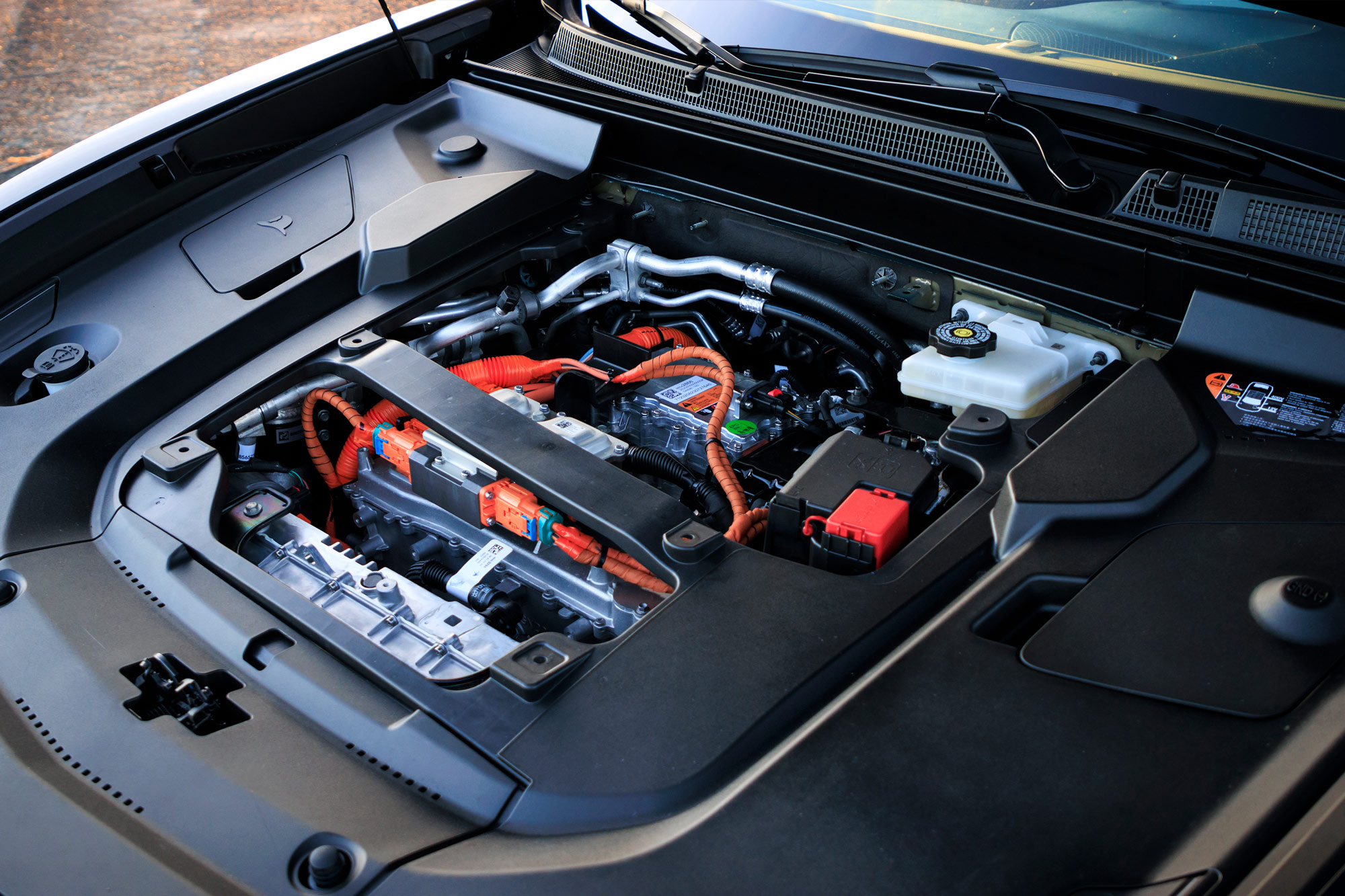 Alex Kwanten
Alex Kwanten
Single Motor Rear-Drive or Dual Motor AWD?
Cadillac offers two powertrain choices in the Lyriq. A single-motor, rear-drive setup with 340 horsepower and 325 pound-feet of torque is standard. Dual-motor AWD is available, with 500 horsepower and 450 lb-ft, as on my test Lyriq. The rear-drive model is quick and offers 314 miles of range versus the dual-motor's 307 miles, but the extra power makes the Lyriq more satisfying.
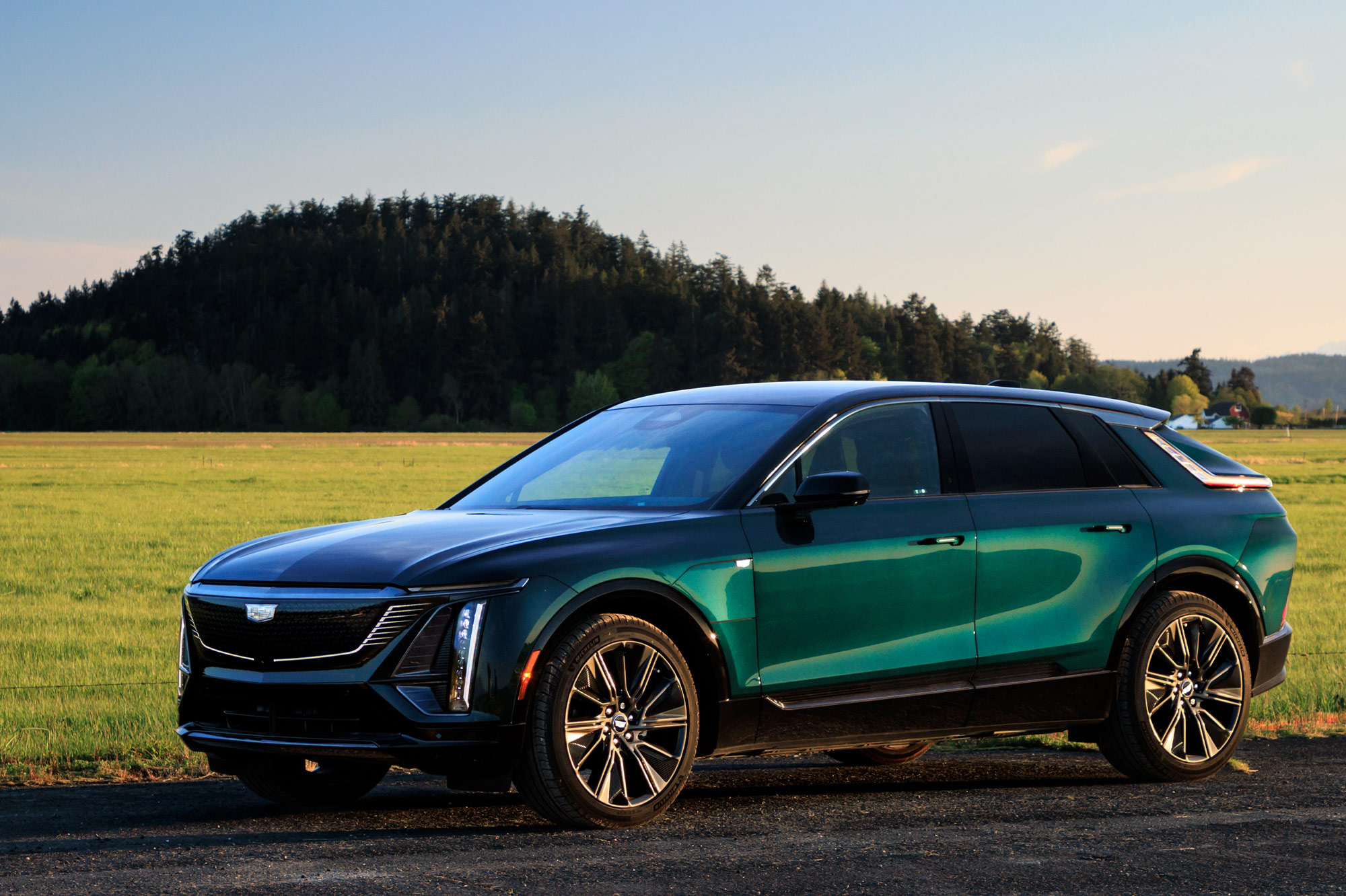 Alex Kwanten
Alex Kwanten
Precise Steering With a Quiet Cruise
On the road, the Lyriq is a refined cruiser. It's whisper quiet, with little wind or road noise even at 75 mph, and it surges forward, firmly but not abruptly, with a linear well of power with the pedal down. By my measurements, the AWD Lyriq can hit 60 mph in under 5 seconds, and it doesn't run out of steam at legal speeds.
You wouldn't take this Cadillac autocrossing. It understeers and doesn't love being hustled on canyon roads, but it isn't sloppy. The steering is precise even if it offers little feedback, and there isn't much body roll. It rides smoothly on most surfaces, even with the huge 22-inch rims on the test car. The tires have plenty of grip but get noisy if you push the Lyriq hard in the corners.
The Lyriq also stops well, and there are multiple regenerative braking settings. Many owners will set it to one-pedal driving, but there's also a regen-on-demand paddle on the left side of the steering wheel. If you dislike the feeling of regenerative braking, you can use this occasionally instead.
 Alex Kwanten
Alex Kwanten
Those giant rims cost little in efficiency, too. The EPA rates the AWD Lyriq as having 307 miles of range and consuming 38 kWh of electricity every 100 miles. I got 248 miles out of the battery in lead-footed combined driving before charging, and it had 31 miles left on the indicator at a 9%. It drew 41 kWh per 100 miles in that time.
It charged quickly, too. On a 350-kW DC fast charger, it juiced from 9% to 81%, a gain of 236 miles on the indicator, in 31 minutes, which matches Cadillac's charging claims. My test Lyriq had the optional 19.2 kW onboard charging module, which speeds up Level 2 charging, but the standard 11.5 kW unit adds 31 miles per hour. That's plenty if you charge at home overnight.
 Alex Kwanten
Alex Kwanten
The Cadillac Lyriq Is an Excellent Blend of Luxury, Value, and Capability
If you're looking for an electric luxury SUV, the Lyriq deserves to be on your list. It feels richer than most recent Cadillacs inside and has a long-absent luxury gravitas. The BMW iX and Genesis Electrified GV70 are more athletic, engaging to drive, and luxurious, but the iX costs more, and the GV70 has less room and range.
Compared with the Mercedes-Benz EQE SUV and Lexus RZ, the Lyriq looks even better, bests them in multiple areas like range and performance, and has a more distinctive style. Tesla's not so flattering Model X has more range but isn't nearly as luxurious. Cadillac's range and charging speeds are highly competitive, and with few exceptions, its technology offerings are as good as or better than those of the competition.
The Lyriq does have quirks. It prioritizes quiet cruising over cornering zest. There's no frunk, cargo space is only so-so, and some desirable features cost extra. But a luxury vehicle should make you feel special, and the Lyriq does that well.
Written by humans.
Edited by humans.
 Alex Kwanten
Alex KwantenAlex Kwanten has worked in automotive media for 15 years and reported on buying, selling, and servicing cars for many outlets. He helps make car buying less intimidating for ordinary folks, but he also loves telling the stories of the people and cultural forces behind new and classic vehicles. A lifelong automotive enthusiast, he's owned scores of cars from more than a dozen countries.
Related articles
View more related articles